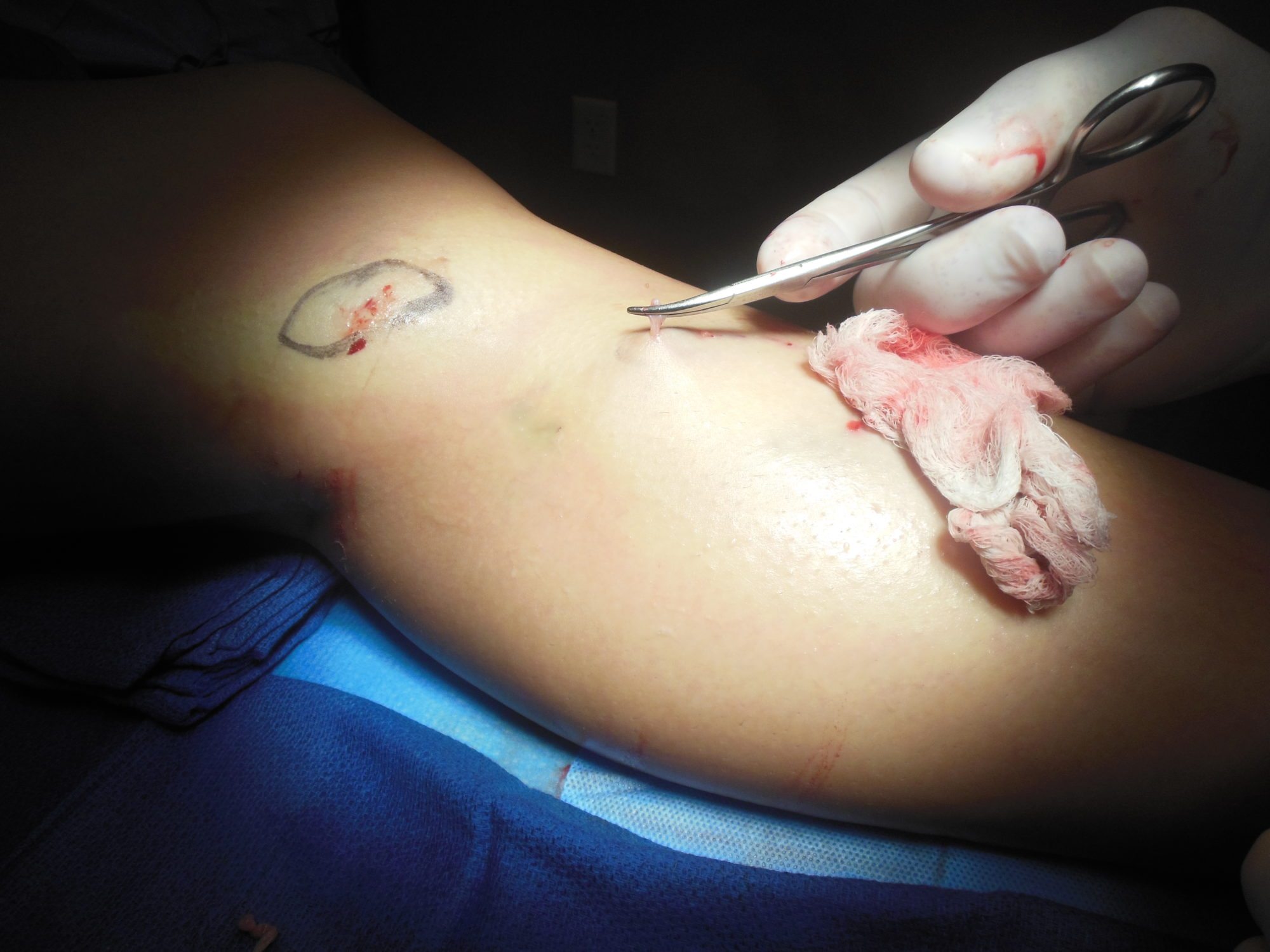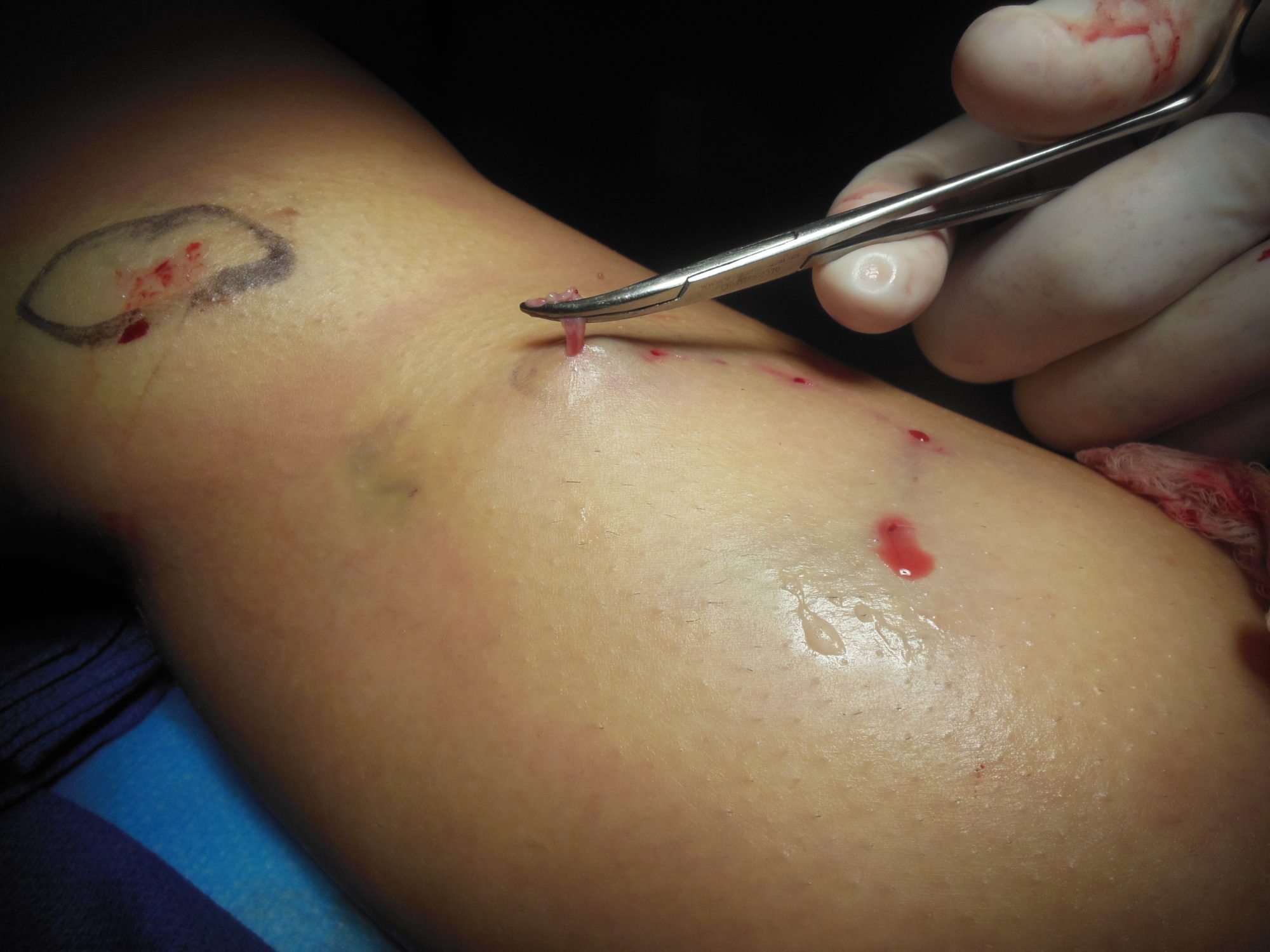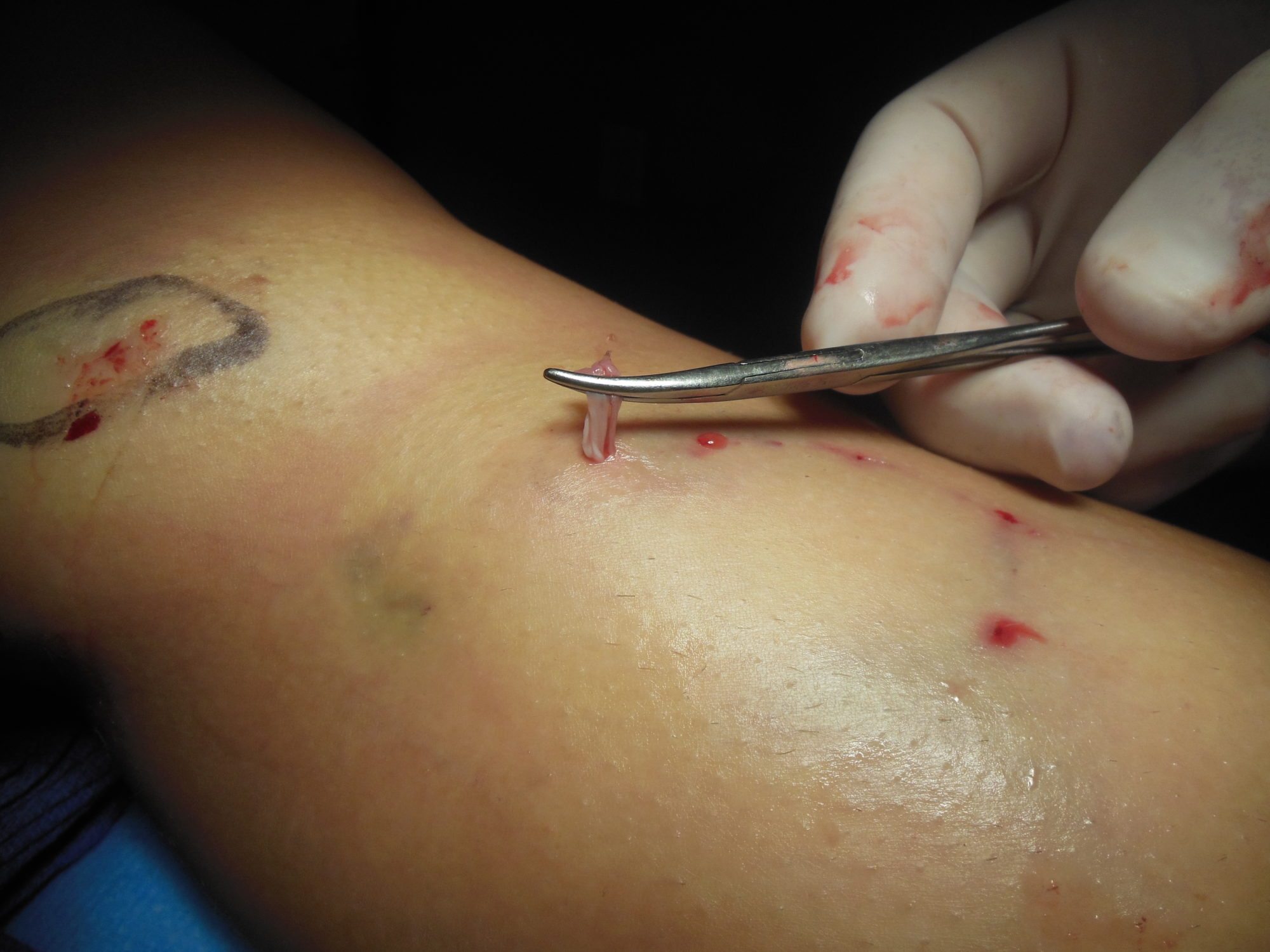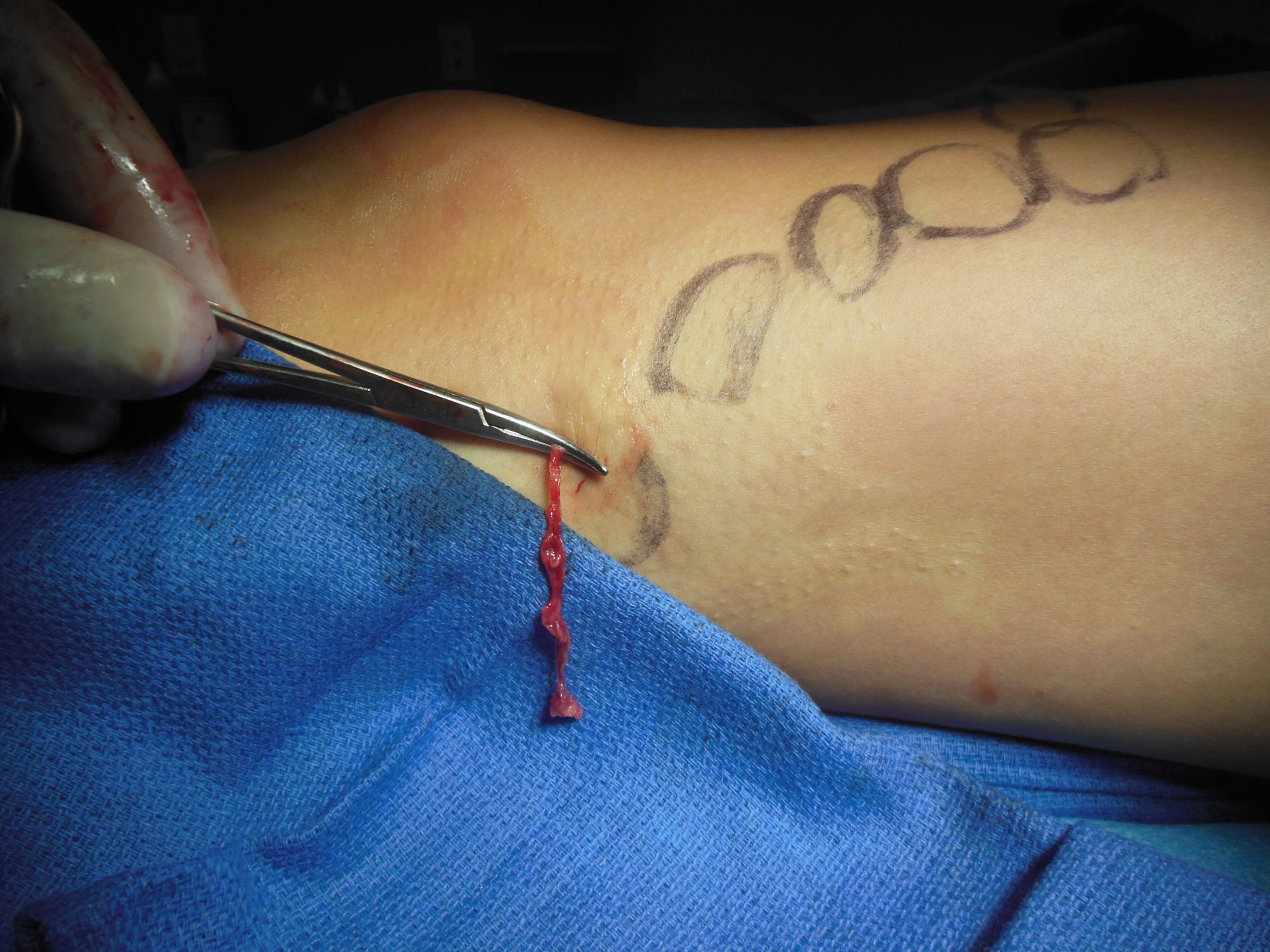





The term “varicose veins” most often refers to those visible, snake-like, bulging veins seen under the skin of the legs. These veins often appear and then grow over time and do so as the result of dysfunction in the deeper veins of the leg. These deeper veins, called the deep femoral system and the saphenous system are not generally seen with the observer’s eye.
In any event, varicose veins can become painful, throb, bleed, can cause skin ulceration and even develop small blood clots within them. While a clot in a varicose vein is painful, these clots rarely migrate. Treatment of varicose veins causing such symptoms consists of several methods, sometimes used in combination. These methods are sclerotherapy and phlebectomy.
First the vein specialist must determine with a thorough ultrasound exam if any of the deeper veins are working improperly and intern, causing the varicose veins to appear. If a deeper vein malfunction is discovered, it is good practice to address this problem before or while simultaneously treating the varicose veins.
As stated above, there are two methods to treat varicose veins. Since these veins sit directly beneath the skin, they sometimes can be injected with a chemical which causes them to close down. This treatment is called sclerotherapy. Alternatively, and perhaps more commonly, the veins can be surgically removed altogether by a microphlebectomy procedure.
Microphlebectomy, is a minor surgical procedure in which the surgeon removes these unsightly and troublesome veins. Very small pricks of the anesthetized skin, less then the size of a pea, are made over the vein and sections of large varicose vein are removed through these small nicks. At Vein Specialists of Tampa, we perform this procedure using local anesthesia and occasionally oral sedation. Afterwards, a leg wrap or compression stocking is worn during the day for the next two weeks. This assures a good cosmetic result with a minimum of bruising. Generally, normal activities are resumed within 24 hours. We ask you to avoid hard impact sports, and running or swimming for about one week.
